Wine Types, Grape Varietals and Wine Glasses :
Tests have shown that the shape and
construction of wine glassware can significantly improve the
bouquet and flavor of wines. The size and shape of different
wine glasses are meticulously tailored to a particular
type of wine and the variety of
grapes in that wine to showcase its partnered wine so that flavor and bouquet
are transmitted in a truly "authentic" manner. The shape of the
bowl and its flare are matched to a wine's bouquet and and
tasting profile to present that wine to its maximum potential.
the unique shape of different wine glasses' result in a
specialized tool which will expertly present the wine to the
palate - delivering the wine to that part of the tongue that
best represents that wine's characteristics.
Below are the leading popular wine types, their associated grape
varietals and their designated wine glasses . These particular
wine glass selections are features of the popular Reidel brand
of specialty quality wine glassware.
Another consideration for wine glasses is the formal table
setting. The proper placement of wineglasses in a table setting
is shown in the following useful diagram. Placement of multiple
wine glasses should be in tasting order left to right, white
wine to red wine to champagne flute to digestive glasses.
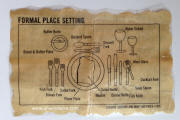 Here are some simple
guidelines when selecting glasses for:
White wines:
- Use a wine glass with a narrow bowl to retain subtle
flavours and nuances. This ensures that the surface area of
exposed wine to oxygen is reduced.
- The wine will remain cooler for longer, therefore
retaining its bouquet.
- A younger, fresher wine is best in a slightly taller,
thinner glass. i.e. champagne is always served in a tall,
fluted glass which contains the bubbles and slowly directs
them gently upwards towards your nose.
- A fuller, fatter wine like a mature Chardonnay is best
out of a slightly shorter, wider rimmed glass. As there is
an abundance of flavour already in the wine, it is
beneficial to have a wider surface area in your glass. A
Chardonnay does not require so much chilling - unless of
course it is very young and high in acidity.
Red wines:
- Use a glass with a wider bowl, increasing the surface
area, enabling the wine to breathe.
- Exposure to oxygen will soften the tannins and allow the
stronger flavours in the wine to show through.
- The wine will be served at
or slightly below
room temperature, therefore it is easier to warm a wider
glass than a tall, narrow one as you hold it in your hand,
this in turn releases more aromas.
A few quick tips:
- Only fill glasses one-third full. This helps to leave
room in the glass to swirl the wine around, so you are able
to enjoy the aromas as they are released.
- When washing good quality wine glasses use very hot
water only without detergent, otherwise the build up of soap
in your glasses may interfere with the taste of wine.
| Bordeaux or
Cabernet Sauvignon Wine, Grape
Varietals and Wineglass - |
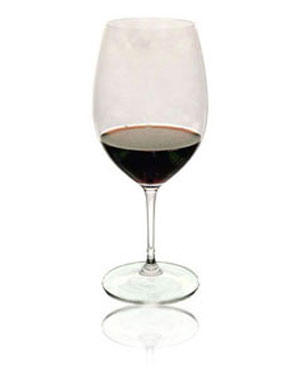 |
Bordeaux or Cabernet Sauvignon
The large elongated bowl of this glass
allows the wine�s aromas to build before
reaching the nose. The opening of the glass
directs wine to the front of the tongue where
sweet receptors detect its luscious fruit
flavors of black cherry and cassis. The full
tapered bowl provides ample swirling room and
concentrates the aromas at the rim for a full
nose. Swirling also aerates the wine and softens
the tannins.
Wineglass
optimized for Grape
varieties and wines:
Bordeaux (Red), Cabernet Franc, Cabernet
Sauvignon, Merlot, Zweigelt |
|
Brunello di Montalcino Wine, Grape
Varietals and Wineglass - |
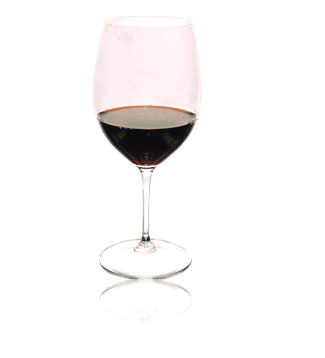
|
Brunello di Montalcino
WineGlass -
Optimized
for
Grape varieties and wines:
Brunello Di Montalcino, Sangiovese Grosso |
| Burgundy or Pinot
Noir Wine, Grape
Varietals and Wineglass - |
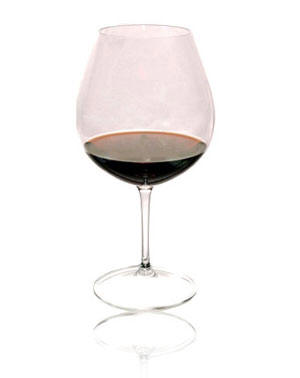 |
Burgundy or Pinot Noir
This glass has a wide, short bowl to
offer more surface area and less distance for
subtle fruit aromas to reach the nose. It
directs wine to the front of the mouth where the
tongue tastes the delicate red fruit flavors and
acids, characteristic of a Pinot Noir. The wide
bowl offers plenty of swirling room to soften
the tannins.
This wineglass is otimized for
Grape varieties and
wines:
Barbaresco, Barolo, Beaujolais Grand Cru,
Blauburgunder, Blauer Portugieser, Burgundy
(Red), Gamay, Nebbiolo, Pinot Noir, Trollinger |
| Chardonnay and Chablis Wine, Grape
Varietals and Wineglass - |
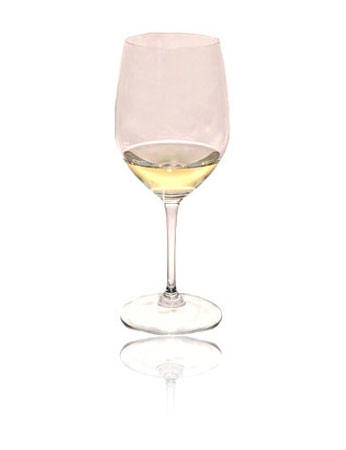 |
Chardonnay and
Chablis -
The fruit flavors of a Chardonnay or Chablis
range from green apple to tropical fruit,
depending on where it was produced. A
Chardonnay/Chablis glass has a smaller bowl to
focus on the delicate aromas of this fruity
wine. The narrow opening delivers wine to the
front of the tongue for fruit flavors to be
savored. Less volume keeps the chilled wine at
its ideal serving temperature longer.
Optimized for
Grape varieties and
wines:
Albarino, Aligote, Bordeaux (White), Burgundy
(White), Chablis, Chenin Blanc, Condrieu,
Cortese, Graves Blanc, Hermitage (White),
Marsanne, Morillon, Pinot (Blanc, Gris),
Rulander, Sauvignon-Semillon, Semillon, Soave,
Viognier |
| Champagne Wine, Grape
Varietals and Wineglass - |
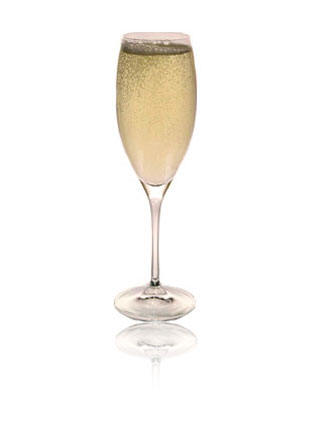 |
Champagne -
The slender flute-shaped glass maintains a
constant flow of bubbles to the palate, where
the fizz, fruitiness, and acidity are fully
enjoyed. The slender glass also maintains the
chilled serving temperature of Champagne and
sparkling wine.
Optimized for
Grape varieties and
wines:
Champagne, Cuvee Prestige, Prosecco, Rose
Champagne, Vintage Champagne, Vintage Sparkling
Wine |
| Chianti - Zinfandel Wine, Grape
Varietals and Wineglass - |
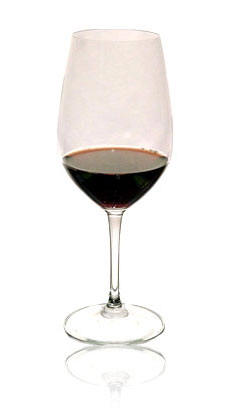 |
Chianti - Zinfandel
Wineglass optimized
for Grape varieties and
wines:
Alsace Grand Cru, Gewurtraminer, Gruner
Veltliner, Jurancon Sec, Riesling (Late
Harvest), Riesling Smaragd, Vouvray |
|
Grappa Wine, Grape
Varietals and Wineglass - |
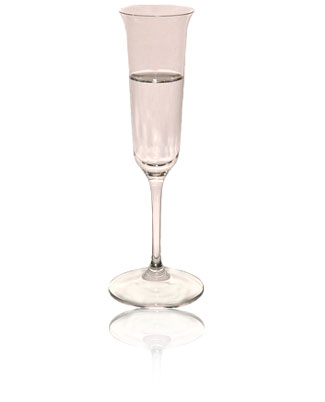 |
Grappa
Optimized for Grape varieties and wines:
Cointreau, Grand Marnier, Grappa, Marc,
Tresterbrande |
|
Montrachet Wine, Grape
Varietals and Wineglass - |
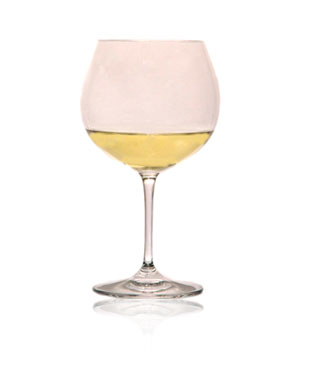 |
Montrachet
Optimized for Grape varieties and wines:
Burgundy (White), Chardonnay, Corton-Charlemagne,
Meursault, Montrachet, New World Chardonnay,
Pouilly-Fuisse, St. Aubin |
| Vintage Port Wine, Grape
Varietals and Wineglass - |
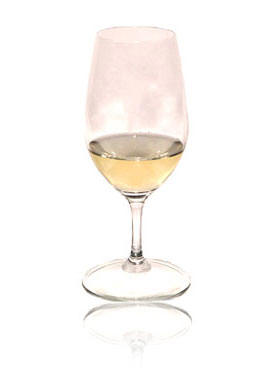 |
Vintage Port -
Optimized for
Grape varieties and
wines:
Colheitas, LBV (Late Botteled Vintage), Madeira,
Malvasia, Marsale, Palomino (Sherry), Sherry,
Tawny Port, Vinsanto, Vintage Port |
| Rheingau Wine, Grape
Varietals and Wineglass - |
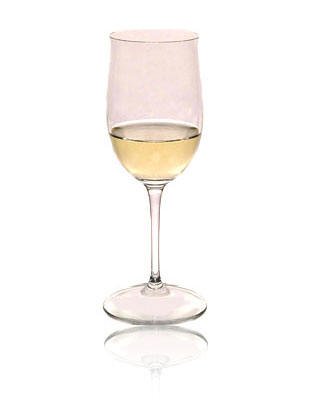 |
Rheingau
Wineglass - Optimized for
Gruner Veltliner,
Mosel-Saar-Ruwer, Muskat-Ottonel, Orvieto
Classico, Pinot (Blanc, Grigio, Gris), Riesling
(Kabinett) Roter Veltiner, Sylvaner, Vernaccia,
Weissherbst, Welschriesling |
| Sauvignon Blanc
and Pinot Grigio Wine, Grape
Varietals and Wineglass - |
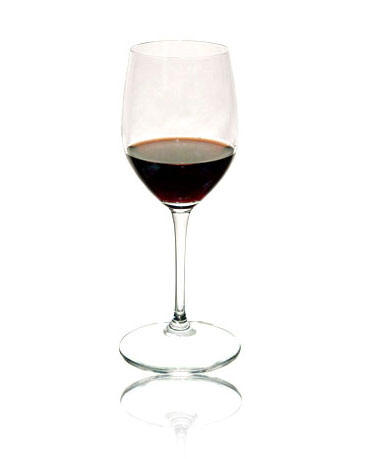 |
Sauvignon Blanc
and Pinot Grigio -
The narrow shape of this bowl focuses the
delicate aromas and delivers them straight to
the nose, while minimizing warming. The narrow
opening targets wine to the front and sides of
the tongue where fruit flavors and acidity are
detected. Sauvignon Blanc and Pino Grigio are
clean, crisp-tasting wines with vibrant acidity,
experienced best with the slightly smaller and
moderately narrowe glass.
Wineglass optimized for Grape varities and
wines:
Chenin blanc, Gew�rztraminer, Muscadet, Pinot
blanc, Pinot Grigio, Sancerre, Sauvignon,
S�million, Silvaner, Soave, Trbbiano |
| Syrah Wine, Grape
Varietals and Wineglass - |
 |
Syrah -
WineGlass optimized for
Grape varieties and
wines:
Amarone, Barbera, Blaufrankisch, Chateauneuf-Du-Pape,
Grenache, Hermitage (Red), Malbec, Mourvedre,
Petite Sirah, Priorato, Shiraz, Syrah |
|
Tempranillo
Wine, Grape
Varietals and Wineglass - |
 |
Tempranillo
WineGlass optimized for Grape varieties and
wines:
Crianza, Ribera del Duero, Rioja, Tempranillo |
 |
Digestive |
| |
|
| Common Wine Grape
Varietals |
|
- Auslese
German wines are
categorized according to ripeness at picking. The minimum
levels of ripeness for each category vary by region, but the
basic categories are Tafelwein (table wine), Qualit�tswein
(quality wine or QbA) and Qualit�tswein mit Pr�dikat
(quality wine with added distinction or QmP). Within the
latter category the distinctions are (in ascending order of
ripeness) kabinett, sp�tlese, auslese, beerenauslese,
trockenbeerenauslese (TBA) and eiswein. Under certain
climatic conditions, the grapes may be affected by Botrytis
cinerea, a desirable fungus that enhances flavor, and is
known in Germany as Edelf�ule. Although they may contain
residual sugar, German wines tend to be richer as one tastes
through the categories of distinction and not until
Beerenauslese is sweetness enough of a dominant factor for a
wine to be considered a dessert wine. At all levels German
wines are balanced by high acidity, so they do not
necessarily taste sweet.
- Bordeaux
Premier French growing
region. Primary varietals: Red (Cabernet Sauvignon, Merlot
and Cabernet Franc) and White (S�millon and Sauvignon
Blanc).
- Cabernet Sauvignon
The undisputed king of
red wines, Cabernet is a remarkably steady and consistent
performer. It grows well in many regions, and is capable of
rendering wines of uncommon depth, richness, concentration
and longevity. Cabernet has an affinity for oak and usually
spends 15 to 30 months in new or used French or American
barrels, a process that, when properly executed imparts a
woody, toasty cedar or vanilla flavor to the wine while
slowly oxidizing it and softening the tannins. Microclimates
are a major factor in the weight and intensity of the
Cabernets. Winemakers also influence the style as they can
extract high levels of tannin and heavily oak their wines.
- Cabernet-Merlot
A common "Bordeaux-blend"
becoming more popular in wines produced worldwide. The
Merlot adds a softer, more supple texture to the bold
Cabernet Sauvignon. (also see Merlot)
- Chablis
Authentic Chablis
is made in France from pure Chardonnay. However, many
wineries market a "Chablis" which can be any semi-dry blend
of white wines.
- Champagne
Only sparkling wine that
comes from the Champagne region of Northeastern France can
boast this name. Champagne can be made from Chardonnay,
Pinot Noir and/or Pinot Meunier. Similar wines that come
from anywhere else in the world are known as "Sparkling
Wines."
- Chardonnay
The "king of white
wines." Chardonnay is the single most popular wine in the
world (if you judge by sales). It makes consistently
excellent, rich and complex whites. This is an amazingly
versatile grape that grows well in a variety of locations
throughout the world. In Burgundy, it is used for the
exquisite whites, such as Montrachet, Meursault and
Pouilly-Fuiss�, and true Chablis; in Champagne it turns into
Blanc de Blancs. Chardonnay has reached superb maturity in
many California regios as well. Among the many other
countries that have caught Chardonnay fever, Australia is
especially strong.
- Corvina
Red grape varietal from the famous red
wine region of Veneto in northern Italy where Valpolicella
wine is made primarily from three grape varieties - Corvina,
Rondinella, and Molinara.
- Cotes du Rhone
(Also Cotes du
Rhone-Village). Blended wines , not only of the14 grape
allowed grape varieties, Grenache being chief among them,
but blended from village to village as well. Of varying
quality, they are best when made by the traditional barrel
fermented techniques and not the newer carbonic maceration
technique (which is how Beaujolais is made, and why
everything made this way tastes like Beaujolais).
- Dolcetto
(Dole-chet-toe):
A red grape
varietal
grown in the region of Piedmont, northern Italy. Fragrant
and fruity, it is usually the quickest to mature of the red
Piedmont wines.
- Dornfelder
Germany. The most
successful new grape is making a wonderful career for
itself. It came originally from a crossing of the negligible
Helfensteiner and Herold grapes and was supposed to improve
the color of bright red burgundy. But Dornfelder came
through as a robust, strong red wine in its own right - due
especially to barrique casking. It is grown mostly in the
Palatinate, and is known in the region as an excellent
Pfalzwein.
- Eiswein
German wines are
categorized according to ripeness at picking. The minimum
levels of ripeness for each category vary by region, but the
basic categories are Tafelwein (table wine), Qualit�tswein
(quality wine or QbA) and Qualit�tswein mit Pr�dikat
(quality wine with added distinction or QmP). Within the
latter category the distinctions are (in ascending order of
ripeness) kabinett, sp�tlese, auslese, beerenauslese,
trockenbeerenauslese (TBA) and eiswein. Under certain
climatic conditions, the grapes may be affected by Botrytis
cinerea, a desirable fungus that enhances flavor, and is
known in Germany as Edelf�ule. Although they may contain
residual sugar, German wines tend to be richer as one tastes
through the categories of distinction and not until
Beerenauslese is sweetness enough of a dominant factor for a
wine to be considered a dessert wine. At all levels German
wines are balanced by high acidity, so they do not
necessarily taste sweet.
- Gewurztraminer
Gew�rztraminer can yield
magnificent wines, as is best demonstrated in Alsace,
France, where it is made in to a variety of styles from dry
to off-dry to sweet. The grape needs a cool climate that
allows it to get ripe. It's a temperamental grape to grow
and vinify, as its potent spiciness can be overbearing when
unchecked. At its best, it produces a floral and refreshing
wine with crisp acidity that pairs well with spicy dishes.
When left for late harvest, it's uncommonly rich and
complex, a tremendous dessert wine.
- Graves
Rich, lush Whites and
Reds from one of the most prestigious regions of Bordeaux.
Not to be missed!
- Huxelrebe
A blended German white
wine, it offers a penetrating bouquet, and fantastic sweet
fruit flavors.
- Kabinett
A semi-fruity German
white wine. Big and generous, with a nice balance between
ripe green apple and apricot. Loaded with bright juicy
flavors of fresh flowers, lemon and red apple. An excellent
summertime wine.
- Late-Harvest Cabernet
Late-Harvest wines are
made from grapes left on the vine after traditional harvest.
These grapes (both Red and White) begin to achieve very high
levels of sugar, and eventually develop " botrytis" (the
noble rot) producing intense, thick, concentrated wines that
are often the most sought-after wines made.
- Molinara
Red grape varietal from the famous red wine region of Veneto
in northern Italy where Valpolicella wine is made primarily
from three grape varieties - Corvina, Rondinella, and
Molinara.
- Merlot
Merlot is the red-wine
success of the 1990s: its popularity has soared along with
its acreage, and it seems wine lovers can't drink enough of
it. It dominates Bordeaux, except for the M�doc and Graves.
Though it is mainly used for the Bordeaux blend, it can
stand alone. In St.-Emilion and Pomerol, especially, it
produces noteworthy wines, culminating in Ch�teau P�trus. In
Italy it's everywhere, though most of the Merlot is lighter
in style. Several styles have emerged. One is a
Cabernet-style Merlot, which includes a high percentage (up
to 25 percent) of Cabernet, similar currant and cherry
flavors and firm tannins. A second style is less reliant on
Cabernet, softer, more supple, medium-weight, less tannic
and features more herb, cherry and chocolate flavors. A
third style is a very light and simple wine; this type's
sales are fueling Merlot's overall growth. Like Cabernet,
Merlot can benefit from some blending, as Cabernet can give
it backbone, color and tannic strength. It also marries well
with oak. Merlot's aging potential is fair to good, but may
become softer with age.
- Montepulciano
Popular Italian red wine.
The most ancient document concerning the wine of
Montepulciano dates back to 789: the minor clerck Arnipert
gave the church of St. Silvester or St. Salvador in
Montepulciano on Amiata Mount a strip of land where vineyard
was grown in the castle of Policiano. The wine of
Montepulciano became very important in 1685, when Francesco
Redi ends lines dedicated to the wine in his dithyramb
"Bacchus in Tuscany" with: "Montepulciano is the king of all
wines". Very dark, almost inky garnet in color, with black
fruit aromas and an odd but appetizing whiff of coffee. Full
and ripe black-fruit flavors are backed by bright acidity,
with good fruit and pleasant spice continuing in a long
finish.
- Montrachet
Exquisite white Burgundy
(France). Powerful bouquet of apples, minerals and spices.
Immensely satisfying aroma. Very elegant yet full of
flavors. Not somber or reserved, yet not as "fat" and
viscous as Meursault. Steely tones combine with richness to
make this wine extremely tasty.
- Nebbiolo
The great grape of
Northern Italy, which excels there in Barolo and Barbaresco,
strong, ageeable wines. Mainly unsuccessful elsewhere,
Nebbiolo also now has a small foothold in California. So far
the wines are lighter and less complicated than their
Italian counterparts.
- Pinot Grigio / Pinot Gris
Known as Pinot Grigio in
Italy, where it is mainly found in the northeast, producing
quite a lot of undistinguished dry white wine and Collio's
excellent whites. As Pinot Gris, it used to be grown in
France's Burgundy and the Loire, though it has been
supplanted, but it comes into its own in Alsace--where it's
known as Tokay. Southern Germany plants it as Rul�nder. When
good, this varietal is soft, gently perfumed and has more
color than most whites.
- Riesling
Undoubtedly the best
German wines are made from Riesling. This white grape is
capable of developing intense flavors at lower ripeness
levels, making it an ideal cultivar for Germany's northern
climate. Under the right weather conditions, Riesling will
ripen late into autumn, rendering late-harvest styles. When
combined with an attack of Edelf�ule, these late-harvest
grapes produce some of the most stunning and longest-lived
wines around. Rieslings are distinguished their floral
perfume, but after that they vary widely. In Germany's
Mosel-Saar-Ruwer area, the wines are delicate and subtle,
with very low alcohol, while in the Pfalz they become spicy,
exuberant and full-bodied. In Alsace the result is bone-dry.
Because Riesling is one of the grapes susceptible to
Botrytis cinerea, it also produces luscious late-harvest
dessert wines. Riesling was Australia's most-planted white
until Chardonnay surpassed it. In California this grape is
known occasionally as White Riesling. It has been declining
in acreage the past few years and quality rarely rises above
the good category. As a dessert wine, though, it can be
exceptional. Grows best in cool areas that allow the grapes
to ripen slowly, so it is also found in Canada--where it is
being used to produce eiswein--and Oregon and Washington
state.
- Riesling Spatlese
German white wine teeming
with bright citrus flavors yet soft in texture. Strikes a
perfect balance between acidity and sweetness. Like biting
into the most perfectly ripened, crisp, fresh green apple. A
very refreshing wine and a real favorite in the summer
months.
- Rondinella
Red grape varietal from the
famous red wine region of Veneto in northern Italy where
Valpolicella wine is made primarily from three grape
varieties - Corvina, Rondinella, and Molinara.
- Scheurebe
A relatively newer German
white wine blend of Sylvaner and Riesling. Lively acidity;
bouquet and taste reminiscent of black currants. A lightly
dusty hint in aroma and lots of spice in taste are typical.
- Semillion-Chardonnay
Semillion is
traditionally a white French blending grape blended with
Sauvignon Blanc to create the foundation for the classic
Sauternes and most of the great dry whites found in Graves
and Pessac-L�ognan. Blending Semillion with Chardonnay is
gaining increasing popularity in California and Australia,
producing smoother, floral whites slightly softer and
lighter than pure Chardonnays.
- Siegerrebe
Siegerrebe is a hybrid of
the classic German/European Gew�rztraminer. It offers a
penetrating bouquet, with very forward fruit flavors. It is
often blended with other German whites such as Huxelrebe and
Spaetlese.
- Spatlese
Delightfully rich German
white wine that full, honeyed peach flavor with tons of
residual sweetness that is so very popular. As an evening
cocktail with fruit and cheese it would serve you very well.
- Trockenbeerenauslese (TBA)
German wines are
categorized according to ripeness at picking. The minimum
levels of ripeness for each category vary by region, but the
basic categories are Tafelwein (table wine), Qualit�tswein
(quality wine or QbA) and Qualit�tswein mit Pr�dikat
(quality wine with added distinction or QmP). Within the
latter category the distinctions are (in ascending order of
ripeness) kabinett, sp�tlese, auslese, beerenauslese,
trockenbeerenauslese and eiswein. Harvested of
individually-selected berries which are overripe and dried
up almost to raisins. Produces rich, sweet, luscious,
honey-like wines.
- Verdicchio
Verdicchio is cultivated
and produced in the area of Italy known as "The Marches,"
situated just in the center of Italy, between the Apennines
and the Adriatic Sea. Although the Marches are not a large
region (less than 10.000 Km2 roughly), visitors can admire
an outstanding range of landscapes: from the sea to the
hills, from the valleys crossed by several rivers to the
tops of the highest mountains. Thanks to this variety, this
region differs considerably from all the other Italian
regions. Verdicchio is a very clear and intense wine, of a
pale yellow with greenish tones, with a rich and delicate
bouquet, full-bodied and savory, with the typical slightly
bitter aftertaste.
- Zinfandel
The origins of this
tremendously versatile and popular grape are not known for
certain, although it is thought to have come from Southern
Italy as a cousin of Primitivo. It is the most widely
planted red grape in California (though Australia has also
played around with the grape). Much of it is vinified into
white Zinfandel, a blush-colored, slightly sweet wine. Real
Zinfandel, the red wine, is the quintessential California
wine. It has been used for blending with other grapes,
including Cabernet Sauvignon and Petite Sirah. It has been
made in a claret style, with berry and cherry flavors, mild
tannins and pretty oak shadings. It has been made into a
full-bodied, ultra-ripe, intensely flavored and firmly
tannic wine designed to age. And it has been made into
late-harvest and Port-style wines that feature very ripe,
raisiny flavors, alcohol above 15 percent and chewy tannins.
Styles aimed more for the mainstream and less for extremes,
emphasizing the grape's zesty, spicy pepper, raspberry,
cherry, wild berry and plum flavors, and its complex range
of tar, earth and leather flavors.
|